Moniek Bloks's Blog, page 91
January 22, 2023
The grave of Marie-Auguste of Anhalt
While lots of royals end up in grand tombs, the grave of Marie-Auguste of Anhalt could not be more humble. In fact, I almost didn’t find it.
Princess Marie-Auguste of Anhalt was born on 10 June 1898 as the daughter of the future Eduard, Duke of Anhalt and Princess Louise Charlotte of Saxe-Altenburg. She grew up mainly in Dessau with her three surviving siblings.
Marie-Auguste married Prince Joachim of Prussia, the youngest son of Emperor Wilhelm II of Germany, on 11 March 1916 in Berlin. His mother’s lady-in-waiting described him as not strong, “either mentally or morally.” His mother, Empress Augusta Victoria, had been instrumental in arranging the match. However, Joachim was involved in a jewellery scandal just before the wedding, and it was feared that the wedding would not go ahead. Nevertheless, they married at the Bellevue Palace in a Lutheran service with only a few guests. His father, the Emperor, was not present.
Their only son, Prince Karl Franz of Prussia, was born on 15 December 1916, but their marriage soon turned sour. There were rumours that he had beaten her and she had fled from their home. Their divorce did not happen until well after the First World War was over. By then, her father-in-law had abdicated his throne, and he was living in exile in the Netherlands. The deeply depressed Joachim took his own life just weeks after the divorce. He had shot himself in Villa Leignitz in Potsdam but had not died immediately. Attendants had found him and had taken him to the hospital, where he died a few hours later. His ailing mother was told he had had an accident, but she probably realised the truth.
Joachim had been given custody of their young son, and the Emperor believed that the boy should now be given into the custody of his uncle Prince Eitel Friedrich. However, it wasn’t until a year later that the German courts ruled that the former Emperor had no say over the matter, and Karl Franz was returned to Marie-Auguste. During this year, the young Prince had spent a lot of time with his grandparents, and he was a comfort to the dying Augusta Victoria. She died in their exile in Doorn on 11 April 1921. Marie-Auguste – whose divorce had not been completely finalised at the time of Joachim’s death – sued her father-in-law for non-payment of the financial support for herself and her son as it had been provided in the marriage contract. The parties eventually agreed to negotiate further, but it is unclear if the matter was settled.
At the end of 1924, newspapers reported the engagement between Marie-Auguste to Teddo Bienert, but the wedding never took place. Instead, she remarried on 27 September 1926 to Johannes-Michael Freiherr von Loën, whom she had known since childhood. They had no children together, and this marriage ended in divorce nine years later.
Marie-Auguste lived a quiet life and saw her son get married three times. His first wife was Princess Henriette of Schonaich-Carolath, the daughter of Emperor Wilhelm II’s second wife, Hermine Reuss of Greiz. They married in 1940 and had three sons together – of which two survived to adulthood. Prince Karl Franz married two more times; firstly, to Luise Hartmann (ended in divorce) and secondly to Eva Maria Herrera, with whom he had two daughters, Alexandra and Desiree.
Marie-Auguste is perhaps best known for what she did in later life. She adopted several adults in exchange for money after getting into financial difficulties. In 1980, she adopted Hans-Robert Lichtenberg, who became known as Frédéric Prinz von Anhalt and who later married Zsa Zsa Gabor. He, in turn, also adopted adults in return for money. He later commented that he gave Marie-Auguste $4,000 every month. Marie-Auguste adopted around 35 adults during her lifetime.Click to view slideshow.Princess Marie Auguste of Anhalt died in Essen on 22 May 1983 at the age of 84. Her grave can be found in the Südwestfriedhof Essen, although you might be in for a bit of a walk.The post The grave of Marie-Auguste of Anhalt appeared first on History of Royal Women.
January 20, 2023
Book News February 2023

The Boleyns: From the Tudors to the Windsors
Hardcover – 15 October 2022 (UK) & 15 February 2023 (US)
Anne Boleyn, the second wife of Henry VIII, was executed on 19 May 1536. Her sister Mary, rumoured mistress to the monarch, lived on and survived the king’s wrath. But this is not the end of the tale of the Boleyns and the British Royal family – their stories have remained entwined for almost 500 years, through countless wars, crises and triumphs. In this book, Amanda Harvey Purse delves into the archives to tell the remarkable story of a number of individuals who form part of the Boleyn bloodline, spanning the worlds of the military, art and politics. Among those featured are Robert Devereux, executed for treason after leading an army against the government in the early seventeenth century; Lettice Knollys, banished from the court of Elizabeth I after marrying the wrong man; and Cecilia Nina Bowes‑Lyon, the grandmother of and godmother to Elizabeth II, who married Claude Bowes-Lyon and played a significant role in the convalescence of soldiers during the First World War.
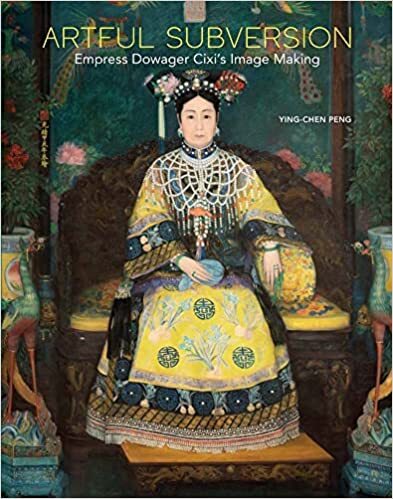
Artful Subversion: Empress Dowager Cixi’s Image Making
Hardcover – 24 January 2023 (US) & 14 February (UK)
Empress Dowager Cixi (1835–1908), who ruled China from 1861 until her death in 1908, is a subject of fascination and controversy, at turns vilified for her political maneuvering and admired for modernizing China. In addition to being an astute politician, she was an earnest art patron, and this beautifully illustrated book explores a wide range of objects, revealing how the empress dowager used art and architecture to solidify her rule.

My Dear Mama
Hardcover – 1 February 2023 (WW)
The sequel to “Dearest Missy” letters of Marie Alexandrovna Grand Duchess of Russia, Duchess of Edinburgh and of Saxe-Coburg und Gotha, and her daughter, Marie Crown Princess of Romania, 1901-1910.
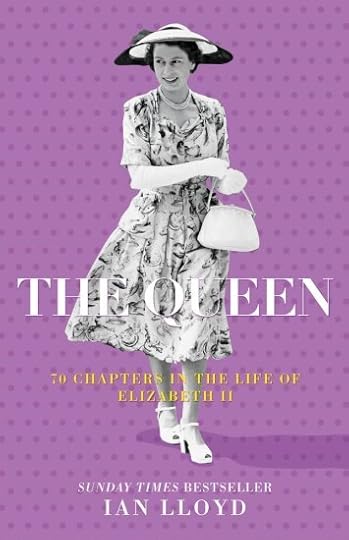
The Queen: 70 Chapters in the Life of Elizabeth II
Hardcover – 1 February 2023 (US) & 21 April 2022 (UK)
This warm and witty biography of Elizabeth II reveals the people, events and themes that have shaped her life and rule.

The Queen: The Life and Family of Queen Elizabeth II
Paperback – 1 February 2023 (US) & 20 October 2022 (UK)
From the author of the critically acclaimed Victoria comes a celebration of the life and times of Queen Elizabeth II.
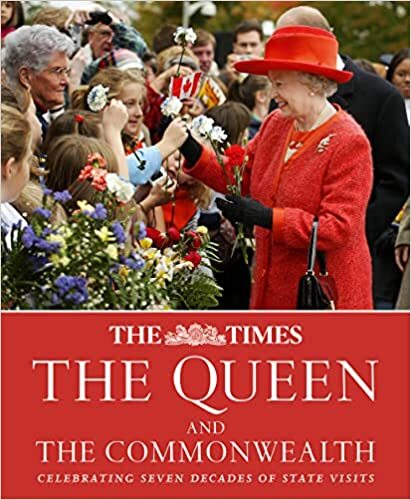
The Times: The Queen and the Commonwealth: Celebrating seven decades of state visits
Hardcover – 7 February 2023 (US) & 13 October 2022 (UK)
Discover insights and memories, and see a changing world reflected in reporting from throughout the 70-year reign of Britain’s longest serving monarch.

The Little Book of Mary Queen of Scots
Paperback – 1 February 2023 (US) & 30 June 2022 (UK)
Mary Queen of Scots is perhaps one of the most controversial and divisive monarchs in regal history. Her story reads like a particularly spicy novel, with murder, kidnap, adultery, assassination and execution. To some she is one of the most wronged women in history, a pawn used and abused by her family in the great monarchical marriage game; to others, a murderous adulteress who committed regicide to marry her lover and then spent years in captivity for the crime, endlessly plotting the demise of her cousin, Queen Elizabeth I of England.

Crown & Sceptre: A New History of the British Monarchy, from William the Conqueror to Charles III
Paperback – 28 February 2023 (US)
On the eve of Queen Elizabeth II’s historic 70th anniversary on the throne, Tracy Borman’s sweeping narrative of the British monarchy illuminates one of history’s most iconic and enduring legacies.

Queen Elizabeth II: Celebrating the legacy and royal wardrobe of Her Majesty the Queen; who reigned in style for a historic seventy years
Hardcover – 7 February 2023 (US) & 27 October 2022 (UK)
Exquisite and sumptuous, immaculately tailored, dignified and, above all, practical. The wardrobe of Queen Elizabeth II was as distinctive in style as her position in the world was unique. This remarkable book is a fond reflection of the days when her Majesty led the field in fashion, showcasing some of the world’s best designers.
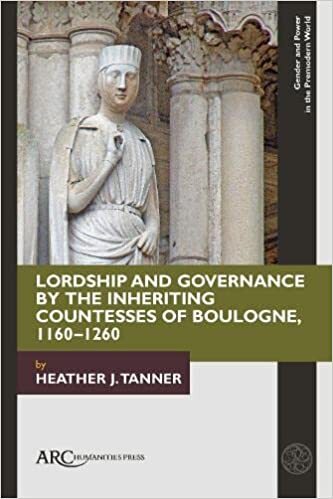
Lordship and Governance by the Inheriting Countesses of Boulogne, 1160–1260 (Gender and Power in the Premodern World)
Hardcover – 28 February 2023 (US & UK)
Traditional scholarship argues that the changes fostered by the growth of royal power and feudalism in Western Europe directly impacted women’s public power and authority in the later twelfth and thirteenth centuries. Focusing on the inheriting countesses of Boulogne (1160–1260) and their neighbours in northern France, this monograph investigates the influence of the rise of centralized government on elite women’s power. This chronological and comparative analysis highlights successive countesses’ governance of inherited lands, the roles they played in their spouses’ lands and in political affairs outside their inherited lands, along with crucial assessments of the social identity and status of the family. It challenges the established interpretation and shows that the establishment of feudalism and the elaboration of bureaucracy did not curtail elite women’s access to or exercise of lordship to any significant degree.

Genevra Sforza and the Bentivoglio: Family, Politics, Gender and Reputation in (and beyond) Renaissance Bologna (Gendering the Late Medieval and Early Modern World)
Hardcover – 27 February 2023 (US & UK)
Genevra Sforza (ca. 1441–1507) lived her long life near the apex of Italian Renaissance society as wife of two successive de facto rulers of Bologna: Sante then Giovanni II Bentivoglio. Placed twice there without a dowry by Duke Francesco Sforza as part of a larger Milanese plan, Genevra served her family by fulfilling the gendered role demanded of her by society, most notably by contributing eighteen children, accepting many illegitimates born to Giovanni II, and helping arrange their future alliances for the success of the family at large. Based on contemporary archival research conducted across Italy, this biography presents Genevra as the object of academic study for the first time. The book explores how Genevra’s life-story, filled with a multitude of successes appropriate for an elite fifteenth-century female, was transformed into a concordant body of misogynistic legends about how she destroyed the Bentivoglio and the city of Bologna.

Anne Boleyn, An Illustrated Life of Henry VIII’s Queen
Hardcover – 28 February 2023 (UK) & 5 May 2023 (US)
‘If you remember my love in your prayers as strongly as I adore you, I shall hardly be forgotten, for I am yours,’ – Henry Rex, forever Written by King Henry VIII to his sweetheart, the seductive and vivacious Anne Boleyn, his passion for her would be so great that Henry would make Anne his queen, and change the course of English history. But the woman whom Henry had promised to love for all time would go from palace to prison, charged with heinous crimes. Her life ended on a bloody scaffold in the Tower of London. Explore the incredible story of Anne Boleyn, the most famous and controversial of Henry VIII’s six wives, in this exciting new account of her life told in words and pictures.
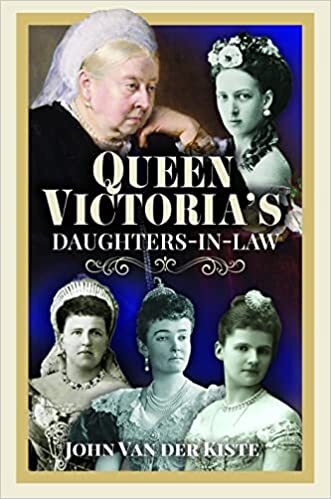
Queen Victoria’s Daughters-in-Law
Hardcover – 28 February 2023 (UK) & 5 May 2023 (US)
Of Queen Victoria’s four sons, the eldest married a Danish princess, one a Russian Grand Duchess, and the other two princesses of German royal houses.

The Granddaughters of Edward III
Hardcover – 28 February 2023 (UK) & 5 May 2023 (US)
The expansion of England as a formidable European powerhouse was also achieved through the traditional lines of political marriages, particularly those of the king of England’s own granddaughters. This is a joint biography of nine of those women who lived between 1355 and 1440, and their dramatic, turbulent lives.

The Tudors (History Snapshots)
Paperback – 28 February 2023 (UK) & 7 May 2023 (US)
Everything you never knew about the powerful Tudor dynasty – from Henry VII to the glorious Elizabeth I. From Battles at Bosworth to battles for supremacy of the royal bedchamber, marriage, war, murder, divorce, religious dissent, Renaissance letters, science and art, political alliances, the Reformation, treason, a Virgin Queen, phantom pregnancies, global exploration, bloody beheadings and a fresh look at why Henry VIII became such a terrifying tyrant.

Diana: The Life and Legacy of the People’s Princess
Hardcover – 16 February 2023 (UK)
Fully illustrated with beautiful photographs, this special commemorative book by royal biographer Brian Hoey – who had the privilege of meeting Diana on several occasions – pays tribute to the life of this remarkable young woman.
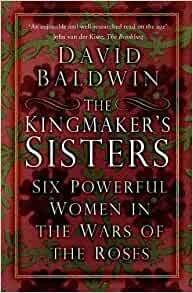
The Kingmaker’s Sisters: Six Powerful Women in the Wars of the Roses
Paperback – 2 February 2023 (UK)
Warwick the Kingmaker, the Earl of Warwick & Salisbury whose wealth and power was so great that he could effectively decide who would rule England during the Wars of the Roses (1455-1487), had six sisters: Joan, Cecily, Alice, Eleanor, Katherine and Margaret. They all married powerful noblemen who fought on opposing sides during this turbulent period.
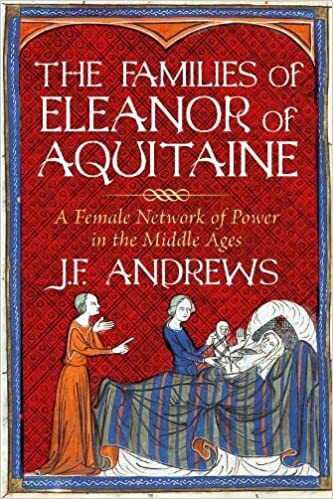
The Families of Eleanor of Aquitaine: A Female Network of Power in the Middle Ages
Hardcover – 16 February 2023 (UK)
The lives of the sons of Eleanor of Aquitaine are the stuff of legend. Her daughters, however, are less well known, and the fascinating personalities of her daughters-in-law have been almost entirely overlooked, as have those of the daughters she bore Louis VII of France.
The post Book News February 2023 appeared first on History of Royal Women.
The Year of Marie Antoinette – The Affair of the Diamond Necklace
By the time of the Affair of the Diamond Necklace, Marie Antoinette’s popularity was already declining, and her reputation was tarnished by gossip.
The necklace in question was commissioned by King Louis XV of France, who was Marie Antoinette’s grandfather-in-law, in 1772, probably for his mistress, Madame du Barry. The necklace cost approximately 2 million lives and was made by jewellers Charles Auguste Boehmer and Paul Bassange. It consisted of 647 diamonds with a weight of 2800 carats. Unfortunately, it had taken the jewellers several years to make, and in the meantime, King Louis XV had died of smallpox, and Madame du Barry had been unceremoniously exiled from court. As a result, the necklace remained unpaid, at significant personal investment of the jewellers, and they were becoming desperate to sell it.
They offered it to Marie Antoinette, who reportedly replied that she “found her jewel cases rich enough” and that they “had more needs of ships than of diamonds.”1 Even a discount could not change the Queen’s mind.
On 12 July 1785, Marie Antoinette received a letter from Boehmer. He wrote, “Madame, We are at the summit of happiness to dare to think that the latest arrangements which have been proposed to us and to which we have submitted with zeal and respect, are a new proof of our submission and devotion to the orders of Your Majesty. We have real satisfaction in the thought that the most beautiful set of diamonds in the world will be at the service of the greatest and best of Queens.”2 Marie Antoinette thought he was soliciting yet another piece of jewellery but was also baffled by the letter. She was determined not to buy from him and burned the letter.
However, Boehmer was under the impression that he had sold the diamond necklace and the letter had, in fact, been dictated by Cardinal de Rohan. The Cardinal was the one who actually paid for the necklace as he was under the impression that the Queen wanted it but did not have the immediate funds to buy it. He also believed he would gain the Queen’s favour as she had hardly ever spoken to him. As time passed following the purchase, Cardinal de Rohan could not understand why Marie Antoinette did not wear the necklace. He even had notes with Marie Antoinette’s signature, which he used to stave off making his own payments on the necklace. Boehmer eventually went to see Madame Campan, who was in Marie Antoinette’s service, who told him that “the Queen had never seen his necklace and that he had been cheated.”3
As the truth unravelled, Cardinal de Rohan revealed that he believed to have been commissioned by the Queen as he had received a letter from her via the Comtesse de Lamotte Valois. Marie Antoinette was indignant and asked why he would believe that she would commission him – a man she had not spoken to for eight years and “especially through the mediation of such a woman?”4 The Comtesse was, in fact, a trickster, and she had signed the notes as “Marie Antoinette de France”, something Marie Antoinette never did. A courtier would have known this. The overwhelmed Cardinal agreed to write down his own account, but he remained as confused as before.
Marie Antoinette’s good name, as far as she still had one, was on the line, and her husband was desperate to preserve it. He said, “The name of the Queen is precious to me, and it has been compromised.”5 Although chivalrous, public opinion would not be so kind. Cardinal de Rohan opted to be tried by the Parliament de Paris, which prolonged the situation and turned it more political. He managed to have all his correspondence with the Comtesse burned before his arrest. Marie Antoinette’s hope that “we shall hear no more of this horrible business” would be crushed soon.6
The Comtesse had set up an elaborate plan with her husband and her lover to rob the Cardinal. She had forged the commission and the repayment plan. On 21 January 1785, the Comtesse claimed that Marie Antoinette wanted to buy the necklace.7 The jewellers were all too relieved to accept the lower price of 1,6 million francs. She picked out a young woman who resembled Marie Antoinette, who met with the Cardinal and who promised him that the past would be forgotten. Once the necklace itself was in their possession, it was taken to London, where the diamonds were pried out and sold. To this day, it is unclear where the stones ended up. Then the story began to unravel, and the Comtesse was arrested shortly after the Cardinal. Her lover soon suffered the same fate, but her husband remained at large.
The Cardinal and the Comtesse’s trial began in May 1786, and Marie Antoinette’s testimony was submitted in writing. On 31 May, the Cardinal was acquitted, although he had to seek King Louis XVI’s pardon and divest himself of all his offices. He was also banned from court. The Comtesse (and her husband in absentia) were sentenced to flogging, branding and life imprisonment. The Comtesse was stripped naked and beaten and then branded as a thief with the letter V for voleuse. She struggled so much against the branding that it missed her shoulder and ended up on her breast. She was then taken to the Salpêtrière prison, where she was to spend the rest of her life. She managed to escape the following year and spent several years in England attacking the Queen in memoirs. She died in 1791, having fallen or having been thrown from a window.8
 Image mocking Marie Antoinette (public domain)
Image mocking Marie Antoinette (public domain)Marie Antoinette wept upon hearing that the Cardinal had been acquitted. Although she had been entirely innocent in the affair, the damage to her reputation was irreparable.
The post The Year of Marie Antoinette – The Affair of the Diamond Necklace appeared first on History of Royal Women.
The Year of Marie Antoinette – The execution of Louis XVI
Marie Antoinette’s husband, King Louis XVI, was officially arrested on 13 August 1792 and sent to the Temple prison.
Much like in Versailles, his life was governed by a daily routine. His jailers observed his every move, which they reported to the press. Louis began his day between 6 and 7 o’clock, shaved and dressed himself. He then took some time to study, and during his early imprisonment, he had access to a library.
He would be joined by his family around 9 o’clock for a breakfast with coffee, milk, fruit, bread and chocolate. An hour later, they moved to Marie Antoinette’s chambers on the third floor, where Louis tutored the Dauphin while the women sewed. Around noon, the family was allowed to walk outside, and they returned inside in the afternoon for the dÎner. This was still an elaborate affair with two main courses, champagne and wine. After the dÎner, they played games until Louis had a nap. Then, around six, there were more lessons. Following the supper at 9 o’clock, Louis retired to his study to read until midnight.
On 21 September, the National Convention proclaimed the Republic, and as the news spread, Louis ignored it and continued reading his book. Limitations to the family routine began to pile up. Mathematics lessons and embroidery were no longer allowed, just in case, they contained code. Louis was no longer allowed to shave in case he used the razor to commit suicide. Nevertheless, Louis took it all in stride and lived from day to day.
Louis had wanted to avoid a formal trial, and he also believed he could be assassinated at any moment. He even made his will on Christmas Day 1792. Despite his hopes, his trial began on 11 December. He had been tutoring the Dauphin, as usual, that day when two officers suddenly took his son away. Marie Antoinette and their daughter, Marie-Thérèse, and Louis’s sister Élisabeth were denied access to him. He was told he could see his children, but only if they did not see their mother or aunt as long as the trial lasted. He refused this and was very upset when he missed Marie-Thérèse’s 14th birthday. He did manage to get a present to her – an almanac for the year 1793. Louis appeared at the trial unshaven and in a brown coat.
The indictment consisted of 32 charges with a general accusation of “conspiring against liberty and an attempt against the safety of the state.”1 All the charges were read to him and required an immediate response – for over four hours, Louis listened and answered. He already knew how this was going to end and wrote, “I am under no illusions about my fate.”2 He compared himself to King Charles I of England, Scotland, and Ireland and wrote, “I will suffer the fate of Charles I, and my blood will flow to punish me for never having shed any….”3 The trial continued throughout December and early January. The vote for his execution ended with 361 in favour – a majority of just one. Due to this close majority, another motion for a reprieve was made, which was rejected with a majority of 70.
 (public domain)
(public domain)On 20 January 1793, Louis was informed that he would be executed within 24 hours. Louis simply pointed to Article 8 of the Declaration of Rights pasted on his wall. It read, “The law should only prescribe punishments which are strictly and evidently necessary: no one should be punished except in virtue of a law passed and promulgated before the offence is committed.”4 He then produced a document requesting a three-day stay to “prepare myself to appear before the presence of God”, to see a priest and to see his family.5 The three-day stay was denied, but the other two requests were granted.
That same evening, he was visited by his sister’s former confessor, and they talked until half past 8. And then, for the first time in six weeks, he was able to see his family. Marie-Thérèse wrote of the meeting, “We found him greatly changed. He wept for our grief but not for his death. He told my mother about his trial, excusing the scoundrels who were bringing about his death. He repeated to my mother that people had wanted the primary assemblies but that he had not because that would have disturbed France. Then he gave sound religious teachings to my brother; above all, he commanded him to pardon those who were about to cause his death. He gave his blessing to my brother and myself. My mother desperately wanted us to spend the night with my father. He refused, having need of tranquillity.”6 As they were forced their part, the screams echoed through the staircase. Marie-Thérèse had to be carried out after fainting.
At 11 o’clock at night, Louis ate two wings of a chicken and a few vegetables. After a few glasses of wine, he made an inventory of the 250 books he had read in prison. He went to bed at half past twelve. In the early morning, Louis was allowed to celebrate mass, but then at 9 o’clock came the moment of departure. He had asked to have his hair cut, but he was refused scissors. He said, “These men see daggers and poison everywhere, they fear I will kill myself. Alas, they know me very badly; to kill myself would be weakness. No, since die I must, I will die well.”7
A green carriage carried the former King to his place of execution. It took an hour and a half to reach the former Place Louis XV in the snow. He recited psalms for the dying during the ride with his sister’s confessor. As he stepped out of the carriage, he took off his coat and unfastened the collar of his shirt. His hands were then tied behind his back as he said, “Do as you please, I will drain the chalice to the dregs.”8 He was then led up the steep steps by the confessor who reportedly said, “Fils de Saint-Louis, ascendez au ciel” (Son of St. Louis, ascend to heaven).9 Louis tried to address the crowd, but his exact words are lost to us. Reportedly, he ended with, “Indeed, I hope that the shedding of my blood will contribute to the happiness of France and you, unfortunate people…”10
Louis’s neck was too big to fit properly into the groove of the guillotine, and the back of his neck and jawbone were “mangled horribly” as the blade came down. The spectators were eager to dip their handkerchiefs in the blood that now flowed from the former King’s lifeless body. Finally, his body was taken to the Madeleine cemetery, where it would lie until 1815.
“Shouts of joy” reached the ears of Marie Antoinette and Madame Élisabeth, the latter of whom exclaimed, “The monsters! They are satisfied now!”11 Marie Antoinette was unable to speak, but she, her sister-in-law and her daughter curtsied deeply for the new – titular – King – her seven-year-old son King Louis XVII.
The post The Year of Marie Antoinette – The execution of Louis XVI appeared first on History of Royal Women.
January 19, 2023
New photos for Queen Mathilde’s 50th birthday
The Belgian royal palace has released two new photos of Queen Mathilde to celebrate her 50th birthday today.
Click to view slideshow.The first photo will also be available as a postage stamp in Belgium.
The post New photos for Queen Mathilde’s 50th birthday appeared first on History of Royal Women.
Royal Jewels – The Festoon Necklace
The Festoon necklace is “composed of 83 brilliants in cut-down collets, the three largest cushion-shaped, set as three graduated chains suspended from triangular clasps at either side, pave-set with a further 22 stones, and joined by a single back-chain with clasp; the individual collets with old spiral links, now fixed.”1
Embed from Getty ImagesThe Festoon necklace was commissioned by King George VI for his daughter, the then Princess Elizabeth, in 1950. It used 105 loose collets that the King had inherited. Queen Elizabeth II often wore the necklace with the Girls of Great Britain and Ireland Tiara.
The post Royal Jewels – The Festoon Necklace appeared first on History of Royal Women.
New Exhibition: Style & Society: Dressing the Georgians
A new exhibition at The Queen’s Gallery at Buckingham Palace will reveal life in the 18th century through fashion.
Style & Society: Dressing the Georgians will have over 200 works from the Royal Collection, such as paintings, prints and drawings and surviving examples of clothing and accessories – from the practical dress of servants to the gowns worn at the court.
One of the major showpieces will be a full-length portrait of Queen Charlotte by Thomas Gainsborough, which is usually in Windsor Castle. For the first time, Queen Charlotte’s book of psalms will be on display, covered in fabric from one of her dresses.
Several items from Queen Charlotte’s jewellery box will also be on display, such as a diamond ring featuring a miniature of her husband, King George III.
Click to view slideshow.Anna Reynolds, curator of Style & Society: Dressing the Georgians, said: “During this period, we start to see court dress lagging behind street style, with people from across a much broader social spectrum than ever before setting fashion trends. The Royal Collection is so rich in visual representations from this period, and the exhibition is a wonderful opportunity to share them with the public. Showing paintings alongside surviving items of dress really adds an extra layer of insight, helping us to understand how clothing was constructed, what it felt like to wear, and how artists approached the challenge of representing Georgian fashion in paint.”
Style & Society: Dressing the Georgians is at The Queen’s Gallery, Buckingham Palace, 21 April – 8 October 2023.
The post New Exhibition: Style & Society: Dressing the Georgians appeared first on History of Royal Women.
January 17, 2023
The Year of Marie Antoinette – The exhumation of Marie Antoinette and Louis XVI’s bodies
“On the 18th of January 1815, the commissioners appointed by the king (Louis XVIII) to search for the sacred remains of their late majesties Louis XVI and the Queen Marie Antoinette, arrived, at eight o’clock in the morning, at the ancient cemetery of the Madeleine on the rue d’Anjou”1
Following King Louis XVI’s execution on 21 January 1793 and Queen Marie Antoinette’s execution on 16 October 1793, both bodies were taken to the Madeleine cemetery, where they were unceremoniously buried.
After Marie Antoinette’s execution, the gravediggers had just started their lunch, and her body and head were left unattended on the grass. During this time, Madame Tussaud was able to sculpt the Queen’s face, but this particular model never went on public exhibition. Two weeks after her burial, the bill came – six livres for the coffin and 15 livres and 35 sous for the grave and the gravediggers.2
Upon her return to France, Marie Antoinette’s daughter Marie-Thérèse was escorted to the cemetery by Pauline de Tourzel. It was just 7 o’clock in the morning, and she wore a simple dress with a veil over her hat. They were accompanied by Pierre Louis Desclozeaux, who had tended to the two graves ever since. He had made a garden there and planted two weeping willows. Marie-Thérèse fell to her knees upon seeing the site and prayed for the happiness of France.
When the exhumation began, Marie Antoinette’s body was found first – deteriorated into a heap of bones. Reportedly her skull was intact, and a member of the exhumation party recognised it by the unique shape of her mouth. Some of her hair was also still present, as were the two elastic garters that she had worn to her execution. The following morning, the remains of King Louis XVI were also uncovered.3
The remains briefly remained in a house near the cemetery before prayers were said, and they were sealed up in new coffins with appropriate inscriptions. On 21 January 1815, a procession brought the King and Queen to the Cathedral of Saint-Denis. Coincidentally, it was also the 21st anniversary of King Louis XVI’s execution. Nowadays, the couple is commemorated in the main church by a sculpture. Their remains are in the necropolis, marked by a black marble slab.
 Photo by Moniek Bloks – Left from top to bottom: Louise of Lorraine (1553 – 1601), Marie Antoinette and the empty grave of Charles X (1757 – 1836).
Photo by Moniek Bloks – Left from top to bottom: Louise of Lorraine (1553 – 1601), Marie Antoinette and the empty grave of Charles X (1757 – 1836).Right Top to bottom: Louis VII (1120 – 1180), Louis XVI and Louis XVIII (1755 – 1824)
Their original burial place is now marked by a chapel. There is also a chapel at the Concierge, where they had been held, with the names of the royal martyrs – King Louis XVI, his sister Elisabeth and Queen Marie Antoinette.
 Photo by Moniek Bloks
Photo by Moniek BloksThe post The Year of Marie Antoinette – The exhumation of Marie Antoinette and Louis XVI’s bodies appeared first on History of Royal Women.
January 15, 2023
Review: Blood, Sex & Royalty
Blood, Sex & Royalty is the latest Netflix documentary on the Tudors.
The three episodes focus on Anne Boleyn’s rise to become King Henry VIII’s Queen. It stars Amy James-Kelly as Anne Boleyn and Max Parker as King Henry VIII. The experts in the series are, amongst others, Suzannah Lipscomb, Lauren Mackay, Tracy Borman and Owen Emmerson. They are well-known historians.
With its obvious Netflix slickness, Blood, Sex & Royalty speaks to a younger audience. This is also obvious with the liberties taken in the costume department and the modern backgrounds. But, overall, it’s quite informative and a nice modern addition to the vast amount of documentaries already made about the period.
However, despite it being three episodes long, it could have been more in-depth. Where was the future Queen Mary I, for example?
Blood, Sex & Royalty is out in Europe, but it has no set release date for the United States yet.
The post Review: Blood, Sex & Royalty appeared first on History of Royal Women.
January 13, 2023
Book Review: Princess Mary: The First Modern Princess by Elisabeth Basford
Princess Mary, later Princess Royal and Countess of Harewood, was born in 1897 as the third child of the then Duke and Duchess of York, later King George V and Queen Mary. She was born during the reign of her great-grandmother Queen Victoria and subsequently lived in six reigns – that of her great-grandmother, grandfather, father, two brothers, and finally that of her niece Queen Elizabeth II.
She went on to marry the future Henry Lascelles, 6th Earl of Harewood, in 1922, and they had two sons together. Mary was known for her charitable works, and many people still have the Princess Mary Christmas gift box, which was sent out to all members of the Armed Forces in 1914.
Princess Mary: The First Modern Princess by Elisabeth Basford is the first full-length biography of Princess Mary. Elisabeth Basford has finally brought Mary back to life, and we are treated to a wonderfully researched book with tons of information. Princess Mary truly was one of a kind, and this book certainly shows that. However, at some points in the book, the information becomes a little dry, and it might be a little boring for some. As Mary did not have any significant scandals and such, you won’t find much drama here. But then again, I do not think one needs scandal in order to be worthy of being written about. (For some reason, I am often asked, ‘But what did she DO?’ when I tell people I am writing about a certain person)
Another minor disappointment for me is the cover of this book. She is completely unrecognisable to most people as it is, but this photo makes it even worse. Surely something better could have been found?
Overall, I thoroughly enjoyed the book and applaud the fact that someone dove into Princess Mary to give us this excellent book.
Princess Mary: The First Modern Princess by Elisabeth Basford is available now in the US and the UK.
The post Book Review: Princess Mary: The First Modern Princess by Elisabeth Basford appeared first on History of Royal Women.



